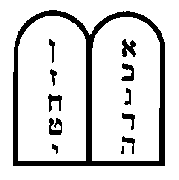


Hello there, This national archives info is courtesy ofJewishgen
12) NATURALIZATION RECORDS:
U.S. Naturalization Records (citizenship papers) are usually
the best source for determining an immigrant ancestor's town of
origin. All U.S. Naturalization papers after 1906 contain the
new citizen's exact town of origin; papers before 1906 may or may
not, depending upon the court.
Before 1906, naturalizations could be performed in any court:
federal, state, county, or local. The information contained in
these records varies greatly from court to court. There are no
centralized indexes to these records -- you need to know which
court.
In 1906, the U.S. government set up the Immigration and
Naturalization Service (INS), which established standards. All
Naturalization records after September 1906 have duplicate copies
filed at:
Immigration and Naturalization Service
FOIA/PA Section, Room 5114
425 Eye Street NW
Washington, DC 20530
The INS has an index to all 1906-1956 naturalizations, but it
is not public. It takes a year or more to receive a response
from the INS. Use them only as a last resort -- try to find the
original papers at the courthouse.
Naturalization records from many courts are now located at the
National Archives regional branches (See Q#8). Start your search
at the regional branch in the area where you ancestor lived. By
mail, they will search their records, and charge you $6.00 if a
record is found. They can also recommend which courthouses in
the region are likely to have naturalization records.
For a few regions of the country, indexes to pre-1906 court
records were prepared by the WPA:
- New England (all 6 states, 1790-1906).
- New York City (all 5 boros, 1790-1906).
These indexes are at the National Archives and also available
through LDS Family History Centers (Q#13). The LDS have also
microfilmed many naturalization papers at county courthouses over
the last 10 years. Look in the FHLC Locality section under the
heading "[State], [County] - NATURALIZATION AND CITIZENSHIP".
There are three basic types of naturalization documents:
- Declaration of Intention ("First Papers")
Filed soon after immigrant's arrival.
- Petition for Naturalization ("Final Papers")
Filed after required waiting period (usually 5 years).
These papers contain the most information.
- Certificate of Citizenship
Given to new citizen to take home. Does not provide much
genealogical information, but useful for locating the other
court documents.
Naturalization laws are very complicated, and have been
changed hundreds of times. For details see:
Newman, John J. "American Naturalization Processes and
Procedures, 1790-1985". (Indiana Historical Society,
1985). 43 pages. ($6).
Some basic laws:
- Before 1922, wives and children became citizens when the
father did. After 1922, women had to file their own
papers.
Date: Thu, 12 Jun 1997 21:50:02 -0700
From: Victoria Reed
Subject: Ship's Info on Naturalization Records
I beg to differ with Mark who said that naturalization papers do not
contain ship information.
I just viewed and copied my great-uncle's Declaration of Intention and
Petition for Naturalization. The Petition contains the dates of
departure and arrival of the ship he traveled on, the ship's name, and
the departure (surprisingly, Melbourne, Australia!) and arrival (San
Francisco) ports.
This information was invaluable to me as I had assumed he entered
through New York, as his brother (my grandfather) did in 1883.
Perhaps naturalizations in S.F. were different than cities in his
experience. This naturalization was through the S.F. Superior Court in
1916. My great-uncle arrived in S.F. in 1902.
Victoria Reed
vic@sf.vineyard.org
Date: Fri, 13 Jun 1997 09:45:00 1
From: "Meshenberg, Mike"
Subject: New York Passenger Manifests
To: sgjewish@trace.cgsg.com
Subject: New York Passenger Manifests
On June 12, Michelle Sandler wrote:
>I have a ships arrival record from January 1906 port of New York. There
is >only 22 columns in it. My later dated arrival records have 29-32
columns. Am >I missing some columns? specifically city where they were
born #28.
No, you're not missing anything. Passenger manifests changed several
times over the course of record keeping, with a general progression to
asking for more information. Prior to 1897 there is relatively little of
genealogical value. The detailed manifests that most of us are familar
with began in June 1897 and continued with a 21-column format to
September 1903. A column asking for "Race or People" was added in
September 1903 (very helpful if searching for Jewish immigrants). An
"Attached Slip" after 29 June 1906 asks for personal information --
height, complexion, color, etc. -- and "Place of Birth" which usually
shows city or town, but often only the name of the province.
More significant additions occurred in July 1907 including asking for the
"City or Town of Last Permanent Residence" (column 10), "Nearest Relative
or Friend from Whence Alien Came" (11), and "Country/City and Town of
Birth" (column 29) -- which are of important genealogical value.
A number of sources provide more details including my own "Documents of
Our Ancestors" (Avotaynu, Inc., 1996) which provides facsimile versions
of the various forms used from 1883 to 1920, and references to several
important works in the field.
Mike Meshenberg, Chicago
mjmeshenberg@anl.gov

![[smile logo]](smile2.gif)
![[smile logo]](smile2.gif)


